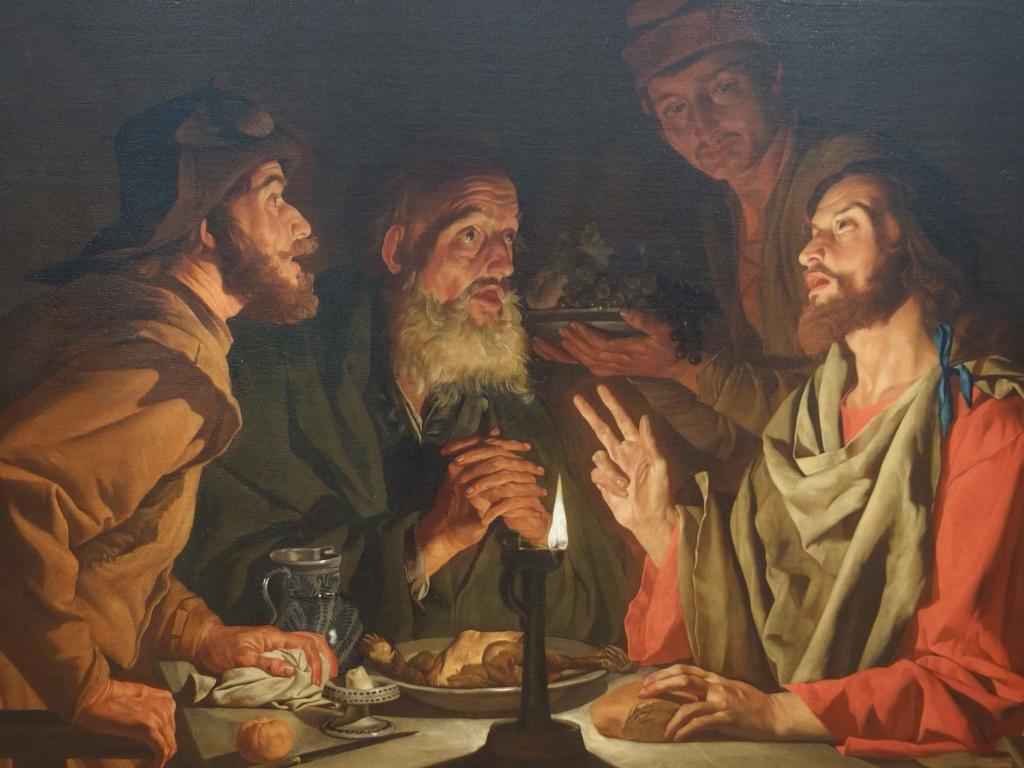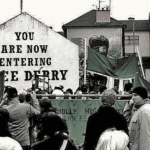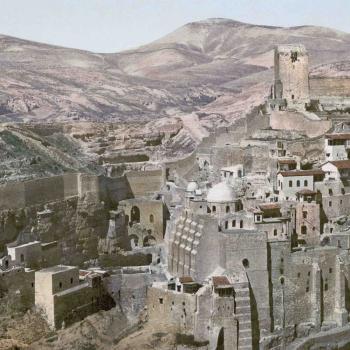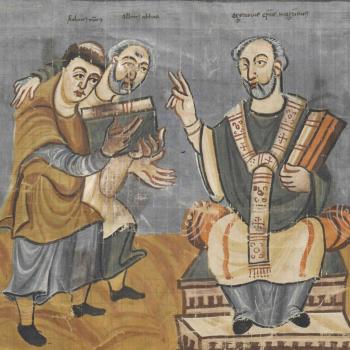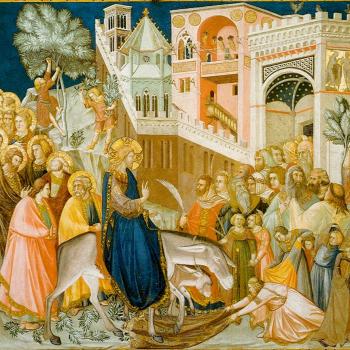Over the next few Sundays, churchgoers are going to hear a lot about the journey to Emmaus, one of the most moving and evocative stories in the gospels. But dare I say that it is often preached with a basic misunderstanding? I am absolutely not the first person to point this out, but the myth I am describing is very resilient.
The story, from Luke 24.13-35, is well known. Two disciples are walking from Jerusalem to Emmaus. Jesus approaches and talks to them, explaining the scriptural basis of all that had happened, culminating in the Crucifixion. They invite him to their home, and at the breaking of bread, they suddenly recognize him; and then he disappears. Then, they asked each other, “Were not our hearts burning within us while he talked with us on the road and opened the Scriptures to us?” A variant or summary story appears in Mark 16.12-13, but virtually certainly, that derives from Luke’s account.
Here is the breakthrough moment in a typical painting from the late 1630s, The Supper at Emmaus. The artist is Matthias Stom, from the Netherlands, who was working in Naples. You see the candle, which symbolizes the light of recognition dawning in the two disciples sitting at the table. Finally, they get it.
The photograph is my own work
Various moments of the Emmaus story are very frequently represented in art, and most follow this general theme. But here is the thing. The story tells of two people walking along, and then inviting a stranger to come back to the house where they live, and giving him a meal. In the context of the time, is it not very, very likely, to the point of certainty, that such a pair would in fact be a man and a woman, a married couple, who live in their house at Emmaus? Yet in the whole history of art, I know of vanishingly few depictions that actually show such a couple, as opposed to two men. (There are a few fine depictions).
The passage offers some idea about who the disciples were. One of them was called Cleopas, the other is anonymous. There is no hint about the gender of “anonymous,” but the passage follows from a paragraph about the women who gathered at the tomb, and a generic description of the disciples. Many through the years have suggested that Cleopas is identical with one Clopas, who appears in the gospels in an interesting context. In John 19.25, we hear about those gathered at the cross during the crucifixion, namely “his mother, his mother’s sister, Mary the wife of Clopas, and Mary Magdalene” (NIV). Do note that the punctuation here is totally a matter of opinion, as there is no punctuation in the original manuscripts, and we don’t know whether “his mother’s sister” was different from Mary, Μαρία ἡ τοῦ Κλωπᾶ. Could there have been two sisters both named Mary, maybe with different qualifiers, or maybe one was a half sister also called Mary? We honestly don’t know. Or was Mary the daughter of Cleopas/Clopas, rather than his wife? If you ever wish to risk your sanity, read the Wikipedia entry on Mary of Clopas.
But here is a real possibility. Perhaps the two going to Emmaus were Cleopas/Clopas and his wife, Mary, who was a sister to Jesus’s mother. They were in fact his uncle and aunt, which for the purposes of the story, adds to the mystery of why they did not recognize him. Is that the only possible reading? Not at all. But it is likely.
The question then arises of where we got the notion of two men sharing a house and table. Partly, that reflected the world view of pious Christian priests and monks who were used to the idea of men living together communally, and certainly men as holy as those of the gospels – and primary witnesses of the Resurrection, to boot! After all, as the two are walking along to Emmaus, they are discussing the meaning of the crucifixion, getting into questions of scripture and theology. Well, an ignorant woman wouldn’t be doing that, would she now? [insert sneering male chuckle here]
Also, the story suggests that the two were disciples in some way, and a long prejudice has undermined the idea of women as disciples, and assuredly not married couples. Despite the explicit New Testament reference to Peter’s mother in law, the apostles’ wives (and children) have largely vanished from the story. We have one exception in the four prophetic daughters of the apostle Philip, but that is an explicit and unavoidable reference in Acts.
Just a thought. In early Christian literature or art, how many examples do we find of what we might call married piety, of a faithful couple engaging in an informed discussion about these critical issues and themes? Not many come to my mind. Praying together, or being martyred together, yes – but a conversation? Do we ever need a theology of domesticity!
So the next time you hear an Easter sermon about these two men meeting Jesus on the road to Emmaus, do stop and ask some obvious questions.
As T. S. Eliot famously recalled Emmaus in The Waste Land,
Who is the third who walks always beside you?
When I count, there are only you and I together
But when I look ahead up the white road
There is always another one walking beside you
Gliding wrapt in a brown mantle, hooded
I do not know whether a man or a woman
—But who is that on the other side of you?
(I am adapting a column I first did here several years back).


